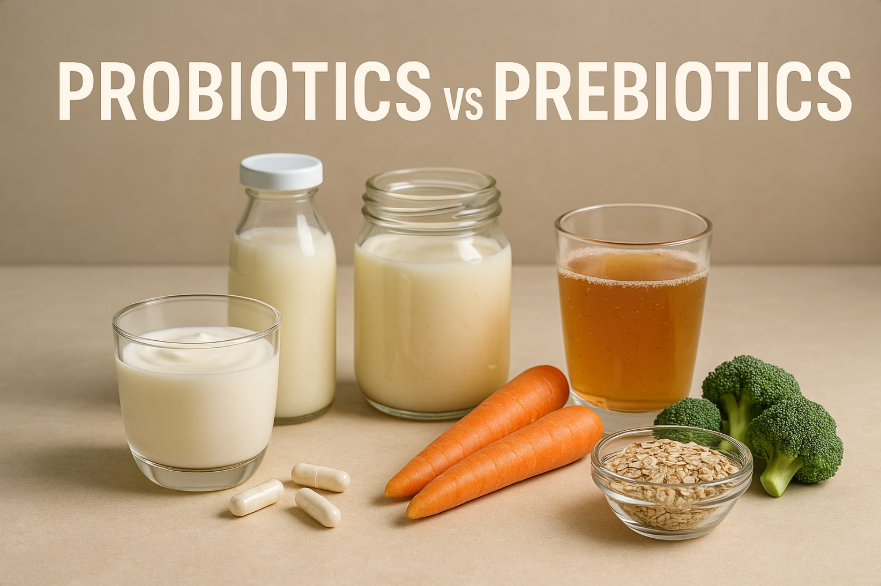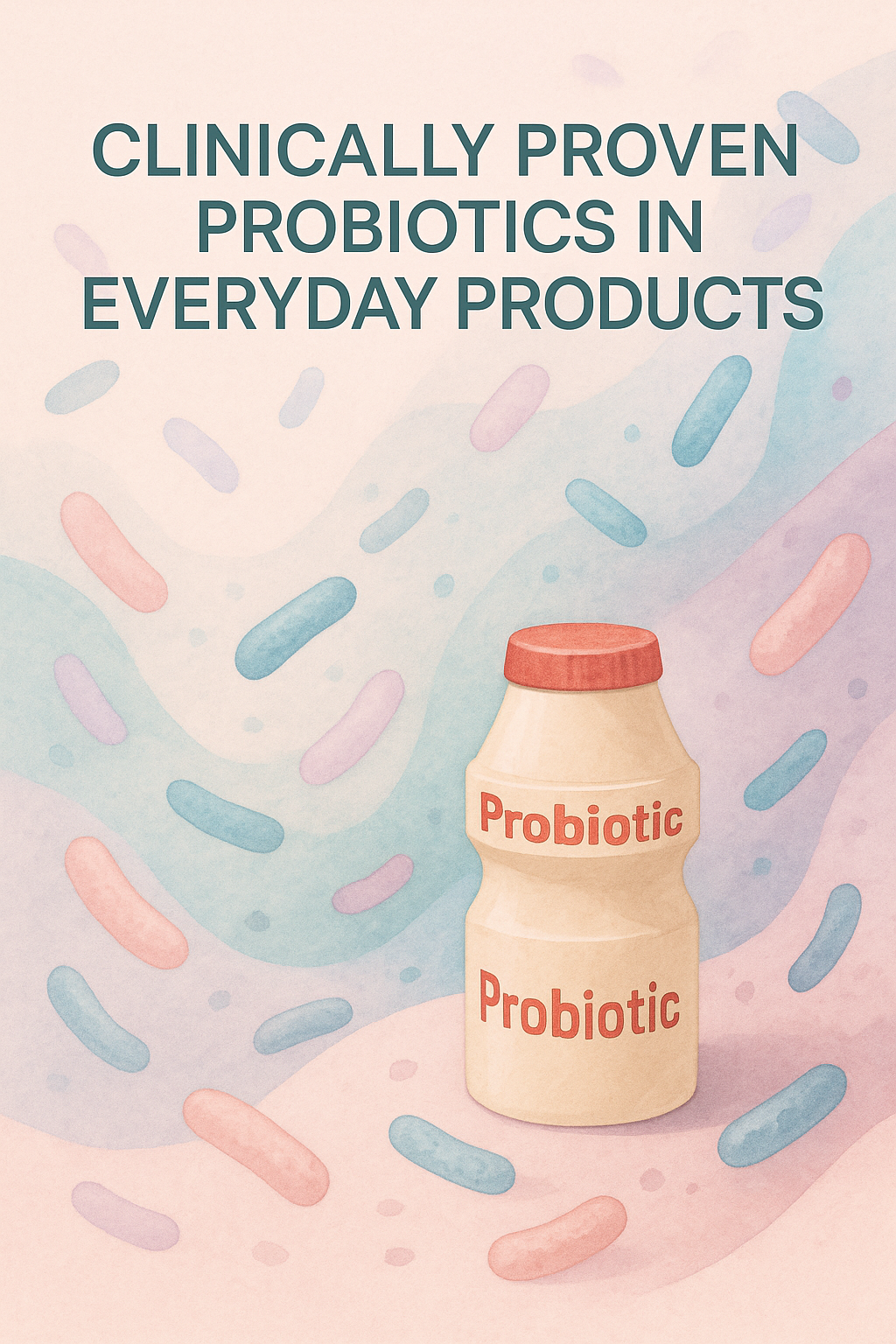
Probiotic drinks, prebiotic sodas, synbiotic snacks — the supermarket is full of gut health buzzwords. But what do these terms really mean? This article breaks down the science behind probiotics and prebiotics, how they work, how they differ, and why both matter for your microbiome.
What Are Probiotics?
Probiotics are live microorganisms (usually bacteria or yeast) that provide health benefits when consumed in adequate amounts.
- They help balance your gut microbiome by crowding out harmful bacteria and promoting diversity. [1]
- They reinforce your gut lining and reduce inflammation by promoting tight junction integrity — think of these as seals that keep harmful stuff from leaking into your body. [2]
- They interact with your immune system via specialized gut tissues called GALT (gut-associated lymphoid tissue), which help train your body to recognize friend from foe. [3]
- Common types include Lactobacillus, Bifidobacterium, and Saccharomyces.
- Found in: Yogurt, kefir, kimchi, miso, probiotic capsules.
What Are Prebiotics?
Prebiotics are non-digestible fibers or compounds that feed beneficial microbes in your gut.
- They promote the growth of helpful bacteria like Bifidobacteria and Akkermansia. [4]
- They are fermented by your gut bacteria into short-chain fatty acids (SCFAs) — helpful molecules like butyrate that reduce inflammation and support gut lining health. [5]
- They can enhance probiotic effects when used together (a combination known as a synbiotic). [6]
- Found in: Bananas, onions, garlic, leeks, asparagus, chicory root, inulin supplements.
Key Differences
| Feature | Probiotics | Prebiotics |
|---|---|---|
| Definition | Live microbes | Non-digestible food for microbes |
| Function | Directly impact microbiome | Indirectly impact microbiome |
| Form | Capsules, fermented foods | Fiber-rich foods, powders |
| Survival Needed? | Yes (must reach gut alive) | No (resist digestion) |
| Dependency | Can work alone | Need microbes to feed |
Why It Matters
Your gut isn’t just a digestive tube — it’s a microbial ecosystem. Both probiotics and prebiotics play essential, complementary roles:
- Probiotics help restore balance, especially after antibiotics or gut distress.
- Prebiotics act like fertilizer for good microbes, helping them thrive and do their job.
- Together, they form a synbiotic strategy for better gut health.
Summary
Think of probiotics as the seeds and prebiotics as the fertilizer. You need both for a thriving internal garden. Not all “gut health” products are created equal — knowing the difference helps you choose what actually works.
References
- Bron PA et al. Front Microbiol. 2017;8:946.
- Anderson RC et al. J Nutr. 2010;140(3):587–91.
- Capurso L. Nutrients. 2019;11(3):701.
- Roberfroid M et al. J Nutr. 2010;140(6):1228S–38S.
- Koh A et al. Cell. 2016;165(6):1332–45.
- Kolida S, Gibson GR. Am J Clin Nutr. 2007;85(5):1251–60.
Disclaimer
This article is for educational purposes only and based on the best available literature at the time of writing. Orisynth Bio strives for accuracy but does not guarantee completeness. This is not medical advice. Always consult a qualified healthcare provider. Orisynth Bio accepts no liability for outcomes resulting from the use of this content.

